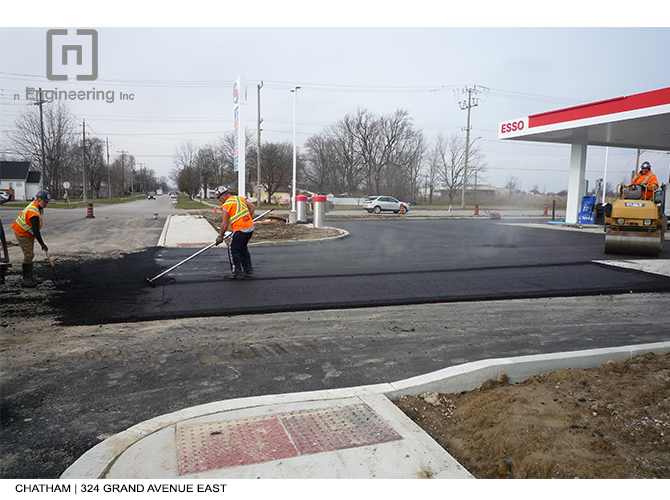Civil engineering is one of the cornerstones of modern infrastructure development, and in Canada, its significance cannot be overstated. From the construction of resilient bridges and roads to the design of sustainable buildings and environmental solutions, civil engineering is critical to the nation’s economic and social well-being. This article provides an in-depth look at civil engineering in Canada, its growth, challenges, and opportunities, while also highlighting the pivotal role that n Engineering plays in shaping the nation’s infrastructure.
The Importance of Civil Engineering in Canada
Civil engineering in Canada has a profound impact on the country’s growth, contributing to the design, construction, and maintenance of infrastructure that ensures safe, efficient, and sustainable living. Canada, with its vast and diverse geography, requires robust and innovative civil engineering solutions to address the unique challenges posed by climate, population distribution, and economic needs.
Civil engineering Canada covers a broad spectrum of disciplines, including transportation engineering, structural engineering, water resources management, environmental engineering, and geotechnical engineering. Each of these areas plays a critical role in improving the quality of life for Canadians and ensuring the sustainability of future generations.
Key Areas of Civil Engineering in Canada
- Transportation Engineering: This sub-discipline focuses on the planning, design, operation, and maintenance of transportation systems, including roads, highways, airports, and public transit networks. In Canada, transportation infrastructure is essential due to the vast distances between urban centers and the necessity for efficient movement of people and goods.
- Civil Engineering Canada has seen a growing emphasis on sustainable transportation solutions, with cities like Toronto and Vancouver working on integrated public transit systems to reduce traffic congestion and environmental impact.
- Structural Engineering: This branch deals with the design and analysis of buildings, bridges, dams, and other structures. With the increasing demand for high-rise buildings and infrastructure projects, structural engineers in Canada are at the forefront of designing safe, durable, and cost-effective structures.
- For example, major urban centers like Toronto have seen a rise in skyscrapers, demanding innovative solutions in structural engineering to meet the requirements of safety, functionality, and aesthetic appeal.
- Water Resources Engineering: Water is a vital resource, and managing it effectively is one of the greatest challenges faced by civil engineering in Canada. Water resources engineering covers the planning and management of water supply, drainage systems, flood control, and wastewater treatment.
- The development of civil engineering in Canada has increasingly focused on sustainable water practices, such as stormwater management, water recycling, and the protection of natural water bodies. As climate change impacts become more prominent, addressing water scarcity and flood risk remains a top priority for Canadian engineers.
- Environmental Engineering: Environmental concerns have become more pressing in recent years, with a focus on sustainable design and reducing the environmental footprint of infrastructure projects. Environmental engineers work on a wide range of issues, including pollution control, waste management, and renewable energy solutions.
- With growing awareness of environmental challenges, Canadian cities are integrating green building practices and sustainable construction methods, ensuring that the civil engineering Canada industry adapts to the evolving environmental landscape.
- Geotechnical Engineering: This field focuses on the behavior of earth materials and their application in civil engineering projects. Geotechnical engineers are crucial in designing foundations, tunneling, and assessing soil stability.
- In Canada, particularly in northern regions with permafrost and unstable soil conditions, geotechnical engineers play a key role in ensuring that infrastructure projects are stable and safe in challenging environments.
Challenges Facing Civil Engineering in Canada
While civil engineering in Canada offers vast opportunities for growth and development, it also faces several challenges that require innovative and forward-thinking solutions. These challenges are multifaceted and reflect the nation’s diverse geography, climate, and economic conditions.
- Climate Change and Environmental Sustainability: The impact of climate change is becoming more pronounced, with rising sea levels, extreme weather events, and shifting temperatures posing significant risks to infrastructure. Engineers must design resilient infrastructure that can withstand these changes.
- In cities like Vancouver and Toronto, infrastructure projects are being built with climate resilience in mind, incorporating elements like green roofs, flood-resistant materials, and renewable energy solutions.
- Aging Infrastructure: Much of Canada’s infrastructure, including roads, bridges, and water systems, was built decades ago and is in need of significant repairs or replacement. This creates a pressing challenge for engineers to upgrade and maintain these systems without disrupting the daily lives of citizens.
- For instance, in major cities like Montreal, extensive work is being done to replace aging underground infrastructure, ensuring that it meets modern standards of safety and efficiency.
- Urbanization and Population Growth: As Canada’s population grows, particularly in urban centers, the demand for new infrastructure and the expansion of existing systems is ever-increasing. This requires efficient planning and resource management to avoid congestion and ensure that growth is sustainable.
- Urbanization in places like the Greater Toronto Area (GTA) has led to the development of cutting-edge infrastructure, such as new transit lines and residential complexes, which challenge engineers to find ways to integrate these new systems into the existing urban fabric.
- Indigenous Land and Cultural Sensitivity: A significant challenge for civil engineers in Canada is working on projects in Indigenous lands. Engineers must navigate legal frameworks, consult with Indigenous communities, and ensure that their projects respect cultural heritage and environmental concerns.
- This requires not only technical expertise but also cultural competence and community engagement, making civil engineering in Canada a field that requires sensitivity and collaboration.
The Role of n Engineering in Shaping Canada’s Future Infrastructure
As a leading player in the field of civil engineering, n Engineering has been at the forefront of addressing the evolving challenges of infrastructure development in Canada. With years of experience in designing and executing large-scale infrastructure projects, n Engineering has contributed significantly to the growth and development of Canadian cities and communities.
Whether it’s designing transportation networks, developing sustainable water management systems, or innovating in building design, n Engineering continues to drive excellence in civil engineering projects across the country. The company’s commitment to using cutting-edge technology, sustainable practices, and a client-centered approach has positioned it as a leader in the civil engineering Canada industry.
The Future of Civil Engineering in Canada
Looking ahead, the future of civil engineering in Canada is bright. With increasing investments in infrastructure and a focus on sustainability and resilience, engineers in Canada will continue to lead the way in designing solutions for the next generation.
- Smart Cities and Digital Innovation: The future of civil engineering will involve more advanced technologies such as artificial intelligence, data analytics, and Internet of Things (IoT) to create smart cities. These cities will leverage technology to enhance the efficiency of transportation, water management, and energy systems.
- Sustainability and Green Engineering: As climate change becomes an ever-pressing concern, the civil engineering industry in Canada is expected to focus on building eco-friendly infrastructure. This includes the use of renewable energy sources, eco-friendly materials, and designing systems that minimize waste and maximize energy efficiency.
- Resilient Infrastructure: With extreme weather patterns becoming more common, Canadian engineers will continue to innovate in creating infrastructure that can withstand these challenges. This involves designing flood-resistant buildings, earthquake-proof bridges, and sustainable drainage systems.
- Collaboration and Multidisciplinary Approaches: The complexity of modern engineering projects will require increased collaboration across various disciplines. Engineers, architects, environmental scientists, and urban planners will work together to create solutions that are not only efficient but also socially and environmentally responsible.
Conclusion
In conclusion, civil engineering in Canada is a dynamic and evolving field that plays a vital role in shaping the country’s infrastructure and supporting its continued growth. From designing resilient transportation networks to developing sustainable buildings and water management systems, civil engineers are at the heart of Canada’s development.
With industry leaders like n Engineering leading the charge, the future of civil engineering Canada looks promising. By embracing innovation, sustainability, and collaboration, Canada’s civil engineering professionals will continue to ensure that the country’s infrastructure meets the challenges of the future while improving the quality of life for all Canadians.

